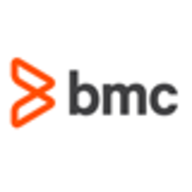

Nintex Process Platform and Control-M compete in the workflow automation and orchestration category. While both are strong contenders, Nintex leads in ease of use due to its low-code capabilities, while Control-M excels in robust scheduling and complex integrations for larger enterprises.
Features: Nintex Process Platform features low-code development for rapid workflow creation, strong Microsoft SharePoint integration, and user-friendly drag-and-drop interface, enhancing its versatility in various business processes. Control-M offers robust scheduling features, cross-platform support, and extensive application integration capabilities, allowing detailed monitoring and workflow orchestration across a range of enterprise environments.
Room for Improvement: Nintex Process Platform needs improvements in performance optimization, broader integration beyond SharePoint, and enhanced mobile compatibility. Control-M faces challenges in improving user interface intuitiveness, modernizing reporting, and simplifying its documentation and support structures for emerging technologies.
Ease of Deployment and Customer Service: Nintex Process Platform supports flexible deployment models across on-premises, cloud, and hybrid setups. However, there are mixed reviews on the quality and response time of its technical support. Control-M offers diverse deployment options catering to hybrid and traditional setups, though new users may find its configurations complex. Its customer service is usually knowledgeable, but integrating into existing infrastructure can be challenging.
Pricing and ROI: Nintex Process Platform is considered expensive due to its complex licensing structure, with costs being a concern for smaller enterprises. However, the benefits in time savings and handling complex process automations often lead to positive ROI. Control-M's pricing is usage-based, which can seem costly but is justified by its extensive feature set. Larger organizations find value in its capabilities despite the high cost, while its scalability promises efficient resource utilization, potentially deterring smaller enterprises from adopting it.
The main return on investment with Helix Control-M has been a reduction in downtime and minimization of manual interventions, which has improved our operational efficiency.
You can run a million batch jobs or tasks at night when all of your highly skilled people are at home sleeping.
By implementing automation tools, you can minimize human errors and improve efficiency.
They quickly evolve with changing technology trends, easily adopt new features, and incorporate them into the product.
The support is accurate, and BMC is always ready to help with queries and complex incidents.
The technical support is very polite, helpful, and available 24/7.
Our license doesn't limit our ability to configure Control-M as needed, allowing us to easily create new agents or environments.
It can absorb more workload wherever needed.
As the workload on Control-M increases, its scalability is much higher.
The downtime is higher compared to AWS.
The testing and development phases need to be more rigorous before releasing patches.
Once properly implemented, the system becomes very stable, which is one of its strongest attributes.
They could provide more documentation and tutorials to make the initial setup easier to understand.
We've experienced main problems with MFTE where having one setup means when an error occurs, the entire service goes down.
Documentation should be maintained for all versions since they provided the application.
Additionally, the deployment process should be easier.
The licensing cost is very high, and they often consider switching to IBM Workload Scheduler or other options.
Control-M tends to be more expensive compared to other solutions, but users get great value from it.
Control-M is among the highest-priced solutions in the market.
Nintex Process Platform is expensive.
Automation is more advanced, deployment is fast, and version control has been simplified.
The user interface is comprehensive and lets me view all my jobs on one page, monitor everything, and access the job history.
It is easy to integrate Control-M with technologies for data ops or DevOps processes as things change, and it is not complex compared to other workload automation tools available in the market.
My team and I created a demo using Nintex, focusing on getting emails, reading, writing, and managing attachments.
| Product | Market Share (%) |
|---|---|
| Control-M | 4.7% |
| Nintex Process Platform | 1.9% |
| Other | 93.4% |


| Company Size | Count |
|---|---|
| Small Business | 26 |
| Midsize Enterprise | 13 |
| Large Enterprise | 114 |
| Company Size | Count |
|---|---|
| Small Business | 17 |
| Midsize Enterprise | 6 |
| Large Enterprise | 24 |
Control-M by BMC is engineered to manage hybrid cloud workflows, offering orchestration capabilities starting at $29,000 annually. Aimed at helping growing teams, it efficiently supports cross-environment scheduling and automation needs.
Control-M offers robust cross-platform scheduling, automation, and integration with applications such as SAP and Informatica. Users appreciate its ease of use with a graphical interface, centralized management, and monitoring capabilities. Advanced features, including Managed File Transfer, automated error handling, and real-time alerts, enhance productivity. The ability to unify workflows and support diverse environments makes Control-M a trusted tool in many sectors. While improvements in reporting flexibility and API integration with tools like ServiceNow are needed, addressing performance issues during upgrades could enhance its value. Offering improved support for new technologies and cloud environments is beneficial, with cost-effectiveness being a consideration.
What are the key features of Control-M?Control-M is leveraged in industries like finance for enterprise scheduling and data management, supporting mainframe, Linux, Unix, Windows, and cloud platforms. It contributes to workflow orchestration and workload automation, improving operational efficiency and enhancing IT infrastructure across those environments.
Nintex Process Platform offers no/low-code development with system integrations and efficient workflow management, ideal for complex business processes. It's known for its scalable workflows, data management through SmartObjects, and a user-friendly visual designer.
Nintex Process Platform enables organizations to automate processes with ease, supporting electronic forms, digital transformation, and seamless department collaboration. Users on SharePoint and other integrated systems leverage its extensive workflow capabilities for approvals, onboarding, and information capture. While its current framework might benefit from performance enhancements and improved management console usability, it remains a strong choice for providing scalable solutions across industries.
What are the key features of Nintex Process Platform?Companies in sectors like government, HR, and financial services implement Nintex Process Platform for its ability to streamline and connect internal processes. It supports approval workflows, notifications, and data capturing, proving its versatility for diverse business needs. However, challenges with document conversion, performance, and cloud feature parity suggest room for enhancements, particularly in industries handling complex workflows.
We monitor all Process Automation reviews to prevent fraudulent reviews and keep review quality high. We do not post reviews by company employees or direct competitors. We validate each review for authenticity via cross-reference with LinkedIn, and personal follow-up with the reviewer when necessary.